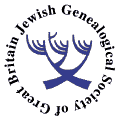THE NEW SYNAGOGUE
RULES & CUSTOMS
by Simon Goulden, Director, United Synagogue Community Services Group
together with
Rabbi Jeremy Conway, Director, United Synagogue Religious Affairs Group
(using edited extracts from the book "Torah Haminhagim - Studies of the
Nusach Ha'Tefillah
and Other Minhagim of the United Synagogue London" by Dayan
Dr Lerner)
Reproduced from editions of Daf-Hashavua, dated from 1 April 2006 to 29
April 2006
Page created: 26 November 2006
Reformatted: 21 November 2011
Latest revision or update (formatting): 14 December 2014
Extract from edition dated 1 April 2006
The minhagim of the United Synagogue are based upon
those of the original founding Synagogues. Dr Cecil Roth, the eminent historian,
in his 'Report on the Archives of the United Synagogue' in 1930, refers back to
a set of rules dated 1692, less than thirty years after the Jews were formally
permitted to return to England. Chief Rabbi Hertz, in his commentary to the
Authorised Daily Prayer Book, dated 1941, refers to a Takanah (Rule) of 1722
which states: "The minhag of this Synagogue shall be the Polish minhag as used
in Hamburg." The laws of the New Synagogue likewise prescribed that the "Form of
Service and Prayer shall be conformable to minhag Poland as already
established". Remarkably, the Western Synagogue, an independent congregation
founded in 1761 but now joined to the family of United Synagogues through the
Western Marble Arch congregation, has precisely the same formula. The original
reference to the usages of Hamburg reflects the fact that predominant amongst
early settlers in London, after the famous visit of Menashe ben Yisrael in 1655,
were migrants from Hamburg.
Extract from edition dated 15 April 2006
[T]he New Synagogue Laws, published
in 1851, started with a preamble reaffirming the name of the Synagogue as the
"New Synagogue as Founded in the Year 5522/1762" and that the forms of service
should conform to minhag Poland.
Extract from edition dated 22 April 2006
Whilst the rules of the New Synagogue, which was founded in
1762, listed various financial and administrative matters, there appeared to be
great emphasis laid upon the fines to be imposed upon congregants refusing to
accept or performing various offices or functions for which they had been
chosen.
Clearly, volunteerism was not high on the community's agenda.
Their method of choosing Chatan Torah and Chatan Bereshit did not appear to be
as democratic as those earlier demonstrated in the rules of The Great Synagogue.
For example, 14 days before Shemini Atzeret, the honorary officers would meet
for the purpose of selecting two gentlemen to serve from a list of 18 names of
members, not in arrears, who had never served previously. A draw was then to be
made for two out of these 18 to be declared the Chatanim. Their duties and
privileges were defined 'including joining in the circumambulations evening and
morning'.
As with The Great Synagogue, the New Synagogue also had the
minhag regarding seven scrolls to be
taken out of the Ark on Hoshanah Rabba and only three for Hakofot on Simchat
Torah. However, there was no mention made of possible breaches of decorum by
those making a "mock misheberach".
Perhaps they were a more sober congregation than the Great Synagogue - or
perhaps they had given up trying!
In a separate section, the rules concern a special Ezras Bale
Batim Fund founded by a certain Mr Abraham Solomons in 1824 for the purpose of
granting annual allowances to the aged and indigent, clearly a much needed and
worthy cause in those difficult times before the Welfare State.
Extract from edition dated 29 April 2006
The rules of the New Synagogue, a founding community of the
United Synagogue and dating back to 1762, provided for the appointment of a
surgeon to attend to the poor of the congregation and, should his skills not be
sufficient, two members were to be elected annually to serve as Overseers of
Burials to ensure compliance with the religious rules. These rules are detailed
in a separate section and include the requirement that 'in case of serious
illness of a member, the Rabbi and Shammas shall attend to read prayers in order
that no member of this community shall depart life without religious
consolation.'
This section is followed by another relating to Kaddish
entitlements, which includes provision for a ballot to decide who is to say
Kaddish after Aleinu if more than one mourner is present. Members of the
Synagogue who were unable to contribute to its support 'shall be allowed to say
one Kaddish every week during the 11 months of mourning'.
One section, dealing with salaried officials of the
Synagogue, note that the beadle must be "a Constable of the City of London"
whose duties comprise, amongst other things, to "take in charge or place in
custody any person or persons, who shall disturb the service of the Synagogue,
or interrupt or disturb the business of any meeting of the vestry". One can only
speculate on the behaviour of the members in Shul which led to such rules being
enacted.
Reproduced from editions of Daf-Hashavua, provided by BRIJNET - British Jewish Network.
Copyright
© United Synagogue, London
Back to New
Synagogue home page


